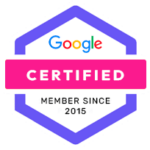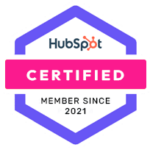5 Website Mistakes That Are Costing You Conversions

In our modern society, your business needs a website to reach its full potential.
The problem with that is, that websites can be quite complex, meaning there may be issues with your website which you don’t even know of that are affecting your conversions.
If you leave these issues and don’t fix them, they may cost you quite a lot of conversions without you even noticing.
That’s why today, we’re going to be covering the 5 website mistakes that are costing you conversions to help you identify and fix them.
1. Content Readability
Firstly, we have content readability and this is a big one.
Here are some common issues with content readability:
- Bad formatting
- Too small (or big) fonts
- Bad contrast
While your content may seem readable at first glance, that’s not always the case.
Nowadays, people have shorter attention spans and just want to skim through websites. If your website welcomes them with a huge wall of text, they will probably leave quite quickly.
Use headings and also don’t try to break your paragraphs up now and again, as this will make it much easier to read.
You also need to make sure that your font sizes are easy to read on both mobile and desktop, otherwise, you’re also going to get a lot of people leaving before they even get the time to hear what you have to say.
Another common mistake is having a bad contrast in the text to background colors, as many of your visitors will find it hard to read your content or simply won’t bother.
2. Optimizing Too Much (Or Too Little)
There is no doubt that Google is a great source of free traffic, but over-optimizing for search engines will do you more harm than good.
In the early days of SEO, tactics like keyword-stuffing were effective, but now Google’s algorithm can detect if you’re over-optimizing your content and they will not reward it.
Even if they wouldn’t, there is no point in getting this flood of free traffic if you’re visitors don’t find your content engaging.
The point is to write for humans first.
But, at the same time, you should be doing some SEO or hiring someone to do it for you, as missing out on the free traffic from Google would be a real disappointment.
It also depends on the page, as sometimes you aren’t necessarily writing it so that it ranks but for other reasons such as providing your existing audience with value.
Of course, that is completely fine too.
Related: Conversion Rate Optimization
3. Technical Issues
Remember at the beginning of the article we mentioned issues you may not even notice?
Technical issues are one of them, especially if you have a website with a lot of content.
What sort of errors are we talking about?
- Broken links (and buttons)
- Bad internal linking structure
- No SSL Certificate
- Site-speed
Even if you haven’t noticed your site could have links to pages that don’t exist anymore, broken links.
These broken links can harm your search engine rankings, as well as the user experience of the page which means they can also cost you conversions.
Having a bad internal linking structure can also be the cause for not getting the rankings your business desires as strong internal linking display content relevancy to Google and other search engines.
The next potential technical issue is not having an SSL certificate installed.
While this is not necessarily crucial, a lot of visitors will notice it and may feel uncomfortable entering their credit card information into your website which doesn’t have an SSL certificate.
If you do need an SSL certificate, there are free services such as Let’s Encrypt which will allow you to encrypt your website free of charge.
Another big potential technical issue is site-speed and this one is quite important, as it directly impacts your revenue.
If your site loads slowly, your visitors will often lead before they even see what you have to say.
This means you don’t even get the chance to engage them, let alone sell to them.
Sometimes you may not even notice that you have a slow site as when you visit it on your computer, there is cache saved to speed up the user experience (for visitors revisiting the page).
That’s why you must keep an eye on your site speed, or at least get somebody to manage it for you.
If you would like to test the speed of your site, you can use free tools such as Pingdom, GtMetrix, or Google’s Page speed insights.
You may also have errors showing up in your search console if you do have a slow site.
4. Bad Navigation
You should make it as easy as possible to navigate your site, as when visitors can’t find what they’re looking for, they will probably leave.
The best way to help your visitors find what they are looking for is by making it easy for them.
Your menus should be clear and pages should be in reach of a couple of clicks where possible to ensure the best user experience.
This combined with a good internal linking structure which we talked about earlier, will give your users a nice and smooth experience.
Plus, if you own a service-based business and pages such as the Contact Us page are hard to find, you’re going to miss out on potential customers.
E-commerce stores can have the same problem with the category and product pages also affecting the revenue.
Just make it easy for the user to find what they’re looking for, as it benefits you too.
5. Inconsistency
Everything should be consistent throughout your website, at least as consistent as possible.
This means consistent:
- Color Choice
- Image Choice
- Brand Message
- Tone of Voice
You don’t want one part of your website to appeal to your visitor, while another part of it doesn’t.
This will lead them to get a mixed opinion of your brand, even if it’s subconsciously.
Take a look at your website and see if you can find any inconsistencies and clear them up as this will help increase your conversions.









